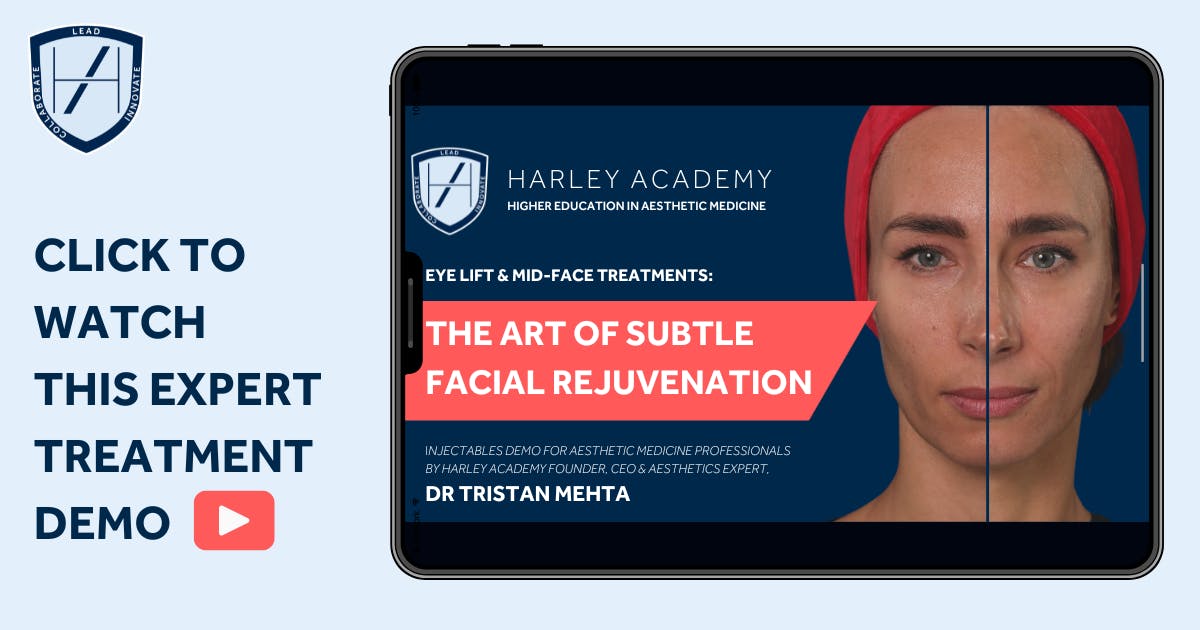Which Aesthetics Course is Best for Confidence Building?
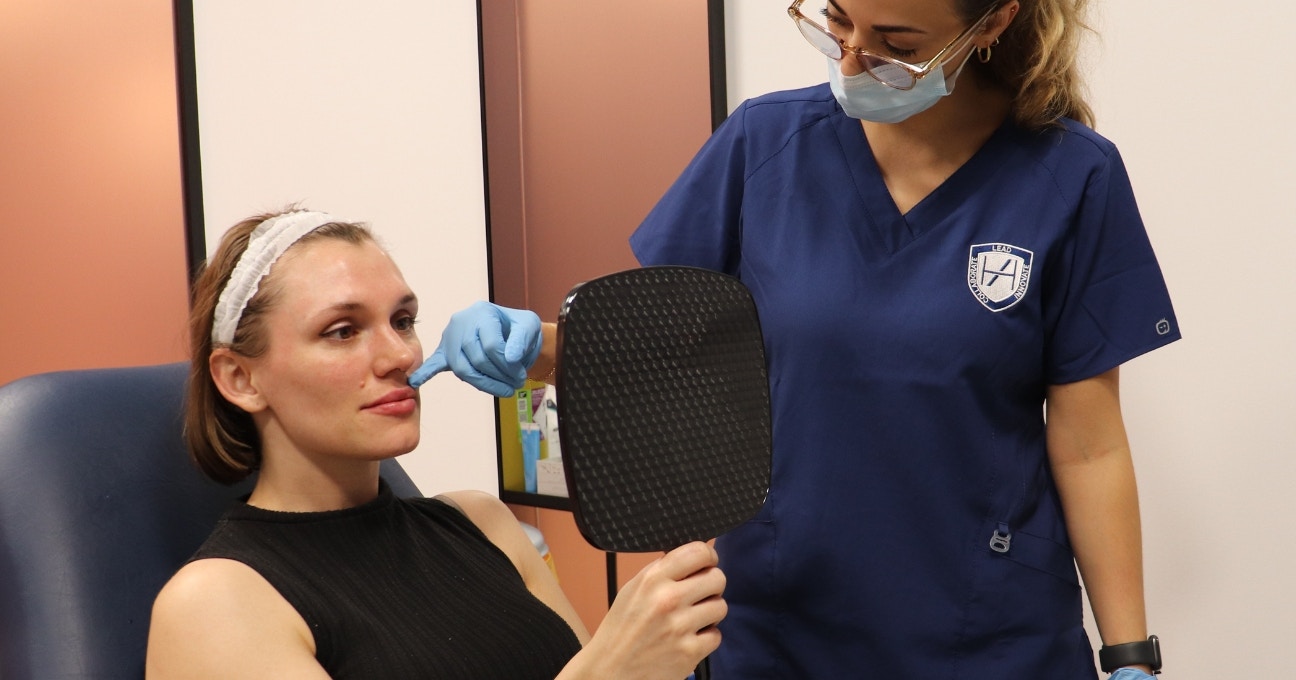
When choosing the best aesthetics course for your needs, confidence plays a big part. Everyone wants to feel as confident as possible in their newly acquired skills, especially when injecting the face.
With results being so visible and complications risks to consider, aesthetic practitioners require confidence to practice effectively.
Even if you’re familiar with facial anatomy and injecting, that’s no guarantee of being an assured aesthetic practitioner. Your entry-level training can reveal that you may not know as much as you thought you did! It’s also good to understand that you don’t know what you don’t know, so staying open to learning will strengthen your comprehension and, as a result, your confidence.
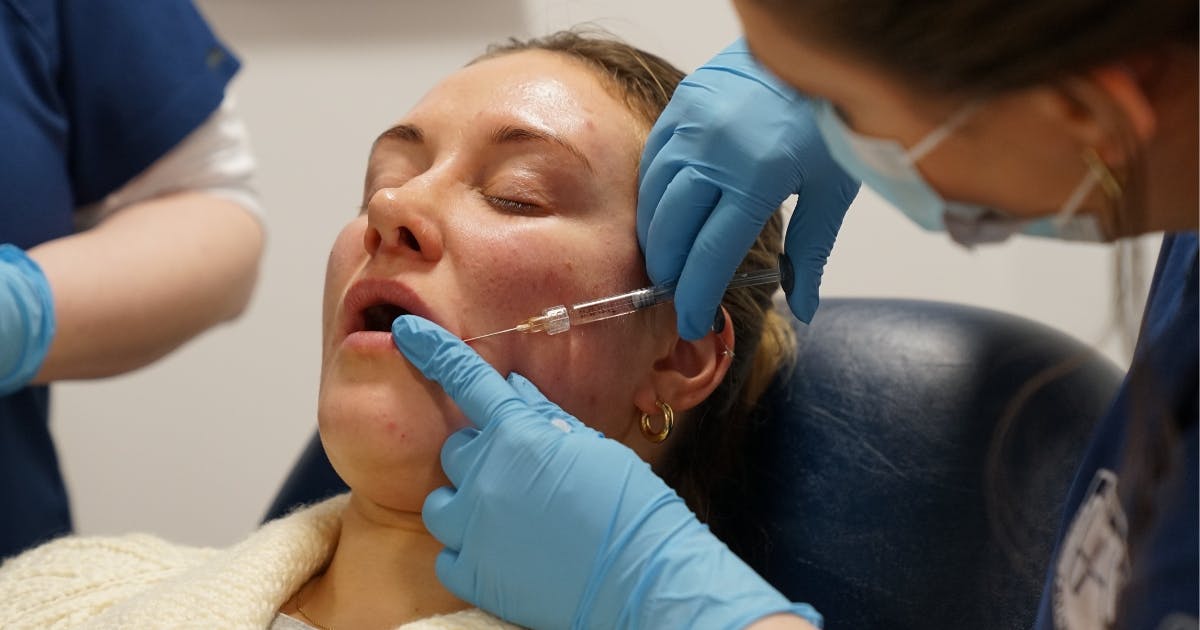
Assessing aesthetics courses for confidence building
Here we break down three aesthetics training routes for healthcare professionals whose primary goal is confidence building.
You’ll see that we’ve assigned a confidence rating to each pathway.
This is intended to provide a pragmatic view of potential confidence levels upon completion of each aesthetics course. The reason behind this is that overconfidence in the medical field can lead to poor decision-making and errors.
In our experience as leaders in the aesthetic medicine education field, we see time and again how injectors who want to continually learn and progress are the ones most likely to succeed. These practitioners all demonstrate an understanding of the breadth and depth of the specialty. Each knows that it takes time, practice and determination to refine their skills and grow their self-belief.
With this in mind, here are our breakdowns of three aesthetics training pathways for optimal confidence building.
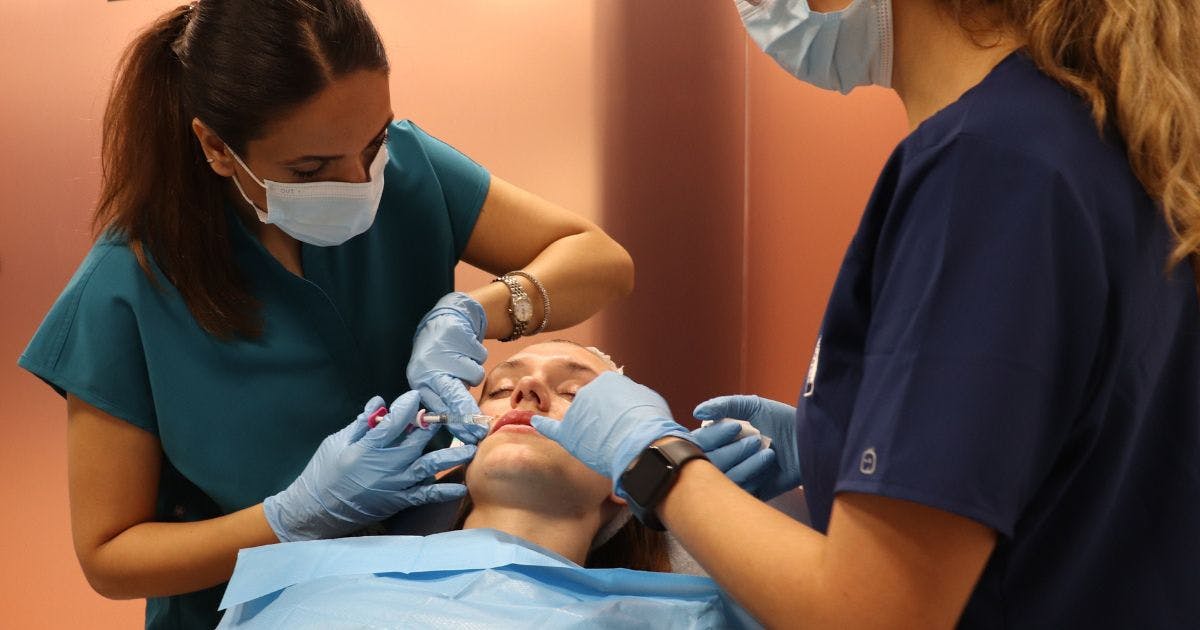
Route 1: The Aesthetics Accelerator with added Injectables Masterclasses
This medical aesthetics training pathway is for you if:
You want to get started quickly on a certified course with a shorter time commitment and smaller monetary outlay. A full qualification is not something you’re looking for at this point.
Time taken to complete:
You can take as long as you need with your pre-course eLearning; you’ll then spend three full days in clinic for the practical elements of your filler and botox course.
Confidence building level:
The Aesthetics Accelerator+ pathway offers solid introductory botox and filler training from both theoretical and practical standpoints. As such, if this is your first foray into aesthetic medicine, we would rate your confidence after successfully completing this course as at least a 3 out of 5.
The Aesthetics Accelerator+ training pathway
Whilst you may be familiar with The Aesthetics Accelerator course, you may not know that it has two options. You can take the course as is, or you can opt for The Aesthetics Accelerator+. This ‘Plus’ version comprises an additional Injectables Masterclass of your choosing alongside your classic Accelerator course.
Course components for The Aesthetics Accelerator+:
- Dedicated eLearning for The Aesthetics Accelerator course
- Foundation Training in Medical Aesthetics
- 1 x additional day of practical training with one-to-one mentoring
- Dedicated eLearning for the Injectables Masterclass of your choice
- 1 x clinical Masterclass day where you’ll treat your own patients focussing on the treatment covered by that specific session.
The Injectables Masterclasses that are open to you are:
- Perioral & Lip Filler Masterclass
- Facial Contouring Masterclass.
You choose one of these to add on to The Aesthetics Accelerator as part of your ‘Plus’ upgrade.
Once you’ve completed your entire Accelerator+ course, including the Injectables Masterclass, you may then add on the other Injectables Masterclass, if you wish. As an incentive to continue your learning, this additional Masterclass would be available to you at a reduced price.
By undertaking this extra day of clinical practice, you’ll further compound the learning from your Accelerator course. You’ll also get to really hone in on an area that interests you and will benefit your patients.
Upon successful completion, you’ll receive the following certificates as part of this training route:
- Foundation Training in Medical Aesthetics completion certificate (awarded after your first clinical day - you can use this to obtain your insurance)
- The Aesthetics Accelerator completion certificate
- A completion certificate for the Injectables Masterclass you undertake as part of The Aesthetics Accelerator+ programme.
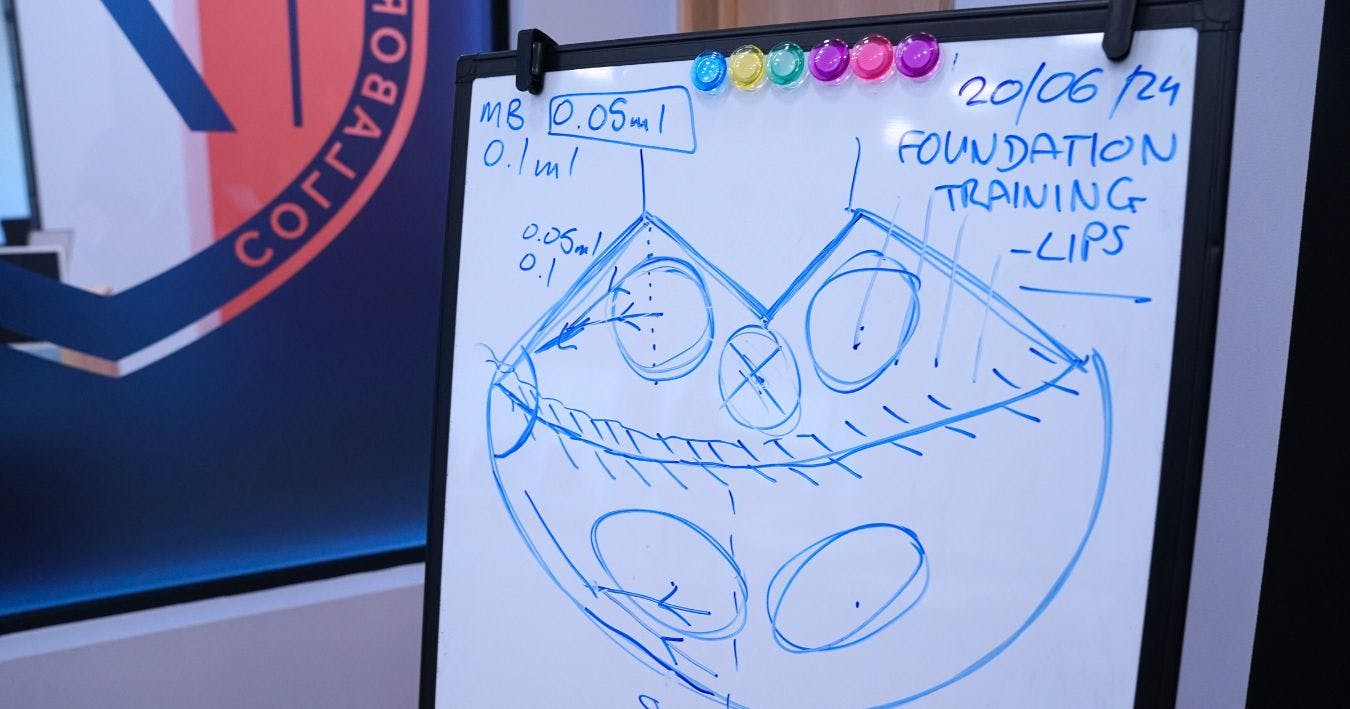
Route 2: The Level 7 Diploma in Botox & Dermal Fillers
This medical aesthetics training pathway is for you if:
You want to immerse yourself in aesthetic medicine from the start and are prepared for a larger time and financial commitment. As an Ofqual-regulated, JCCP-approved, postgraduate level course, this full qualification is a great route for those concerned about future aesthetics licensing requirements.
Time taken to complete:
Our Level 7 Diploma in Botox & Dermal Fillers generally takes around 18 months to complete. However, it can be done within 12-24 months, or - if you book your exams in advance and there is availability - you may be able to complete it in less than 12 months. Some people have managed to complete their Level 7 course in closer to 6 months, though this is somewhat rare. You can, however, start to practice aesthetics privately as soon as you have obtained your insurance. We will award the certificate required for this upon successful completion of the Foundation Training component of your course.
Confidence building level:
We would rate your confidence after successfully completing our Level 7 Diploma in Botox & Dermal Fillers course as at least a 4 out of 5.
The Level 7 Diploma in Botox & Dermal Fillers pathway
A qualification innovated by our Founder and CEO, Dr Tristan Mehta, and mapped to the Health Education England guidelines, Harley Academy is a specialist in delivering the highest quality Level 7 training in cosmetic injectables.
With robust theory learning, a focus on one-to-one mentoring and vast clinical experience, the Level 7 injectables course is designed to produce safe, effective and confident aesthetic practitioners.
This is a postgraduate qualification to be proud of and something that can help you to demonstrate your competency to your patients. It’s not just an education that you’re investing in, it’s also a marketing tool that can help you to stand out from the crowd.
Course components for the Level 7 Diploma in Botox & Dermal Fillers:
- Dedicated suite of Level 7 eLearning
- Foundation Training in Medical Aesthetics
- 2 x Clinic Shadowing Days - also known as Observation Days
- One-to-one clinical mentoring sessions covering at least 10 cases of filler and 10 cases of botox (the 10th case of each will be your assessment)
- 1 x botox DOPS (Direct Observation of Practical Skills assessment)
- 1 x filler DOPS
- Logbook submission
- 1x Short Answer Questions assessment
- 1x Clinical Scenario Questions assessment
- 1 x Literature Review
- 1 x Theory Exam.
You will be awarded the following:
- Foundation Training in Medical Aesthetics completion certificate (awarded after successful completion of your first clinical day - you can use this to obtain your insurance)
- Level 7 Diploma in Clinical Aesthetic Injectable Treatments qualification and certificate (awarded should you gain a pass mark that is upheld during moderation by our awarding body, VTCT)
- The ability to use the post-nominal title, PGDipAes (VTCT).
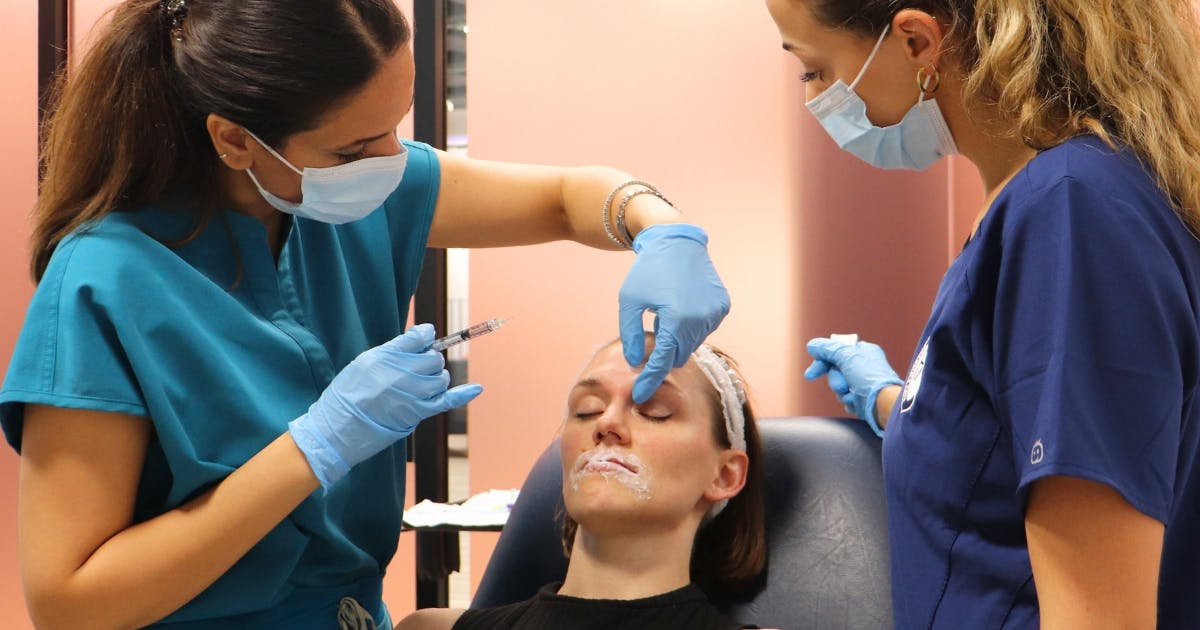
Real-world insights from a Level 7 graduate
We spoke to cosmetic nurse prescriber and Harley Academy clinical trainer, Shantel Noble. Shantel is based in London and runs her own clinics in London, Suffolk and Essex. As a graduate of our Level 7 Diploma course, she told us how confident she felt after completing it. She also compares the difference between her confidence levels as an aesthetic nurse following the completion of her Foundation Training.
Read on for her interesting insights..!
How confident were you after you completed your Foundation Training in Medical Aesthetics?
“Following completing my Foundation Training in Botox & Dermal Fillers I actually wasn’t confident at all. If anything, the Foundation Training made me realise just how comprehensive and just how much of a specialty aesthetic medicine is. Particularly compared to the previous medical background that I’d had within nursing. So, I didn’t feel confident at all but I did have a much better understanding of what was required to be a safe, effective and successful practitioner within the industry.”
Foundation Training in Medical Aesthetics is designed as an introduction to aesthetic medicine. It provides the framework to start building your aesthetics career from and allows you to administer core botox and filler treatments. Whilst it’s currently legally sufficient to allow you to obtain the insurance you require to start practising injectables, we always advise seeing this short aesthetics course as the starting point of your journey.
As Shantel says, once you delve into this extensive field, you’ll realise how crucial it is to continue your education.
After completing your Level 7 Diploma in Botox & Dermal Fillers, how confident did you feel?
“So, following the Foundation day, having an understanding of the skills I needed to obtain, I then went on to do a Level 7. This had a much more comprehensive approach whereby there was heaps of eLearning that allowed me to have a much better theoretical understanding, but the practical learning was key.
“That one-on-one dynamic set up of having close-contact supervision, intimate learning really helped me to progress. By the end of my Level 7 I was much more confident in botox and dermal fillers but this was specifically in the areas of fillers that we cover, the foundational areas. At this point, I hadn’t progressed to anything more advanced, which is the best way to do it, so you’re comfortable with basic, or ‘core’, botox and filler treatments.”
Were there any other ways that your Level 7 injectables training made you feel more confident as an aesthetics practitioner?
“Having more exposure to patient interactions, but with the comfort of having a supervising specialist practitioner there with me, helped me to improve my own social skills in operating in a clinical setting, one-to-one. This was something so different to what I had come from,” shares Shantel.
“Also, it just helped me to understand faces on a more bespoke level. That then improved my injecting approach. This also allowed me to have more open conversations regarding education with patients, going through their medical history in more depth where necessary. Obviously, there can be a lot of contraindicatory information for treatment that it’s important to explore.
“So, I would say that the biggest difference between confidence after my Foundation Training and after my Level 7 was not only in my skill set. It was also just experiencing the process of running a private aesthetics clinic. This then helped me when I started setting up my own business.”
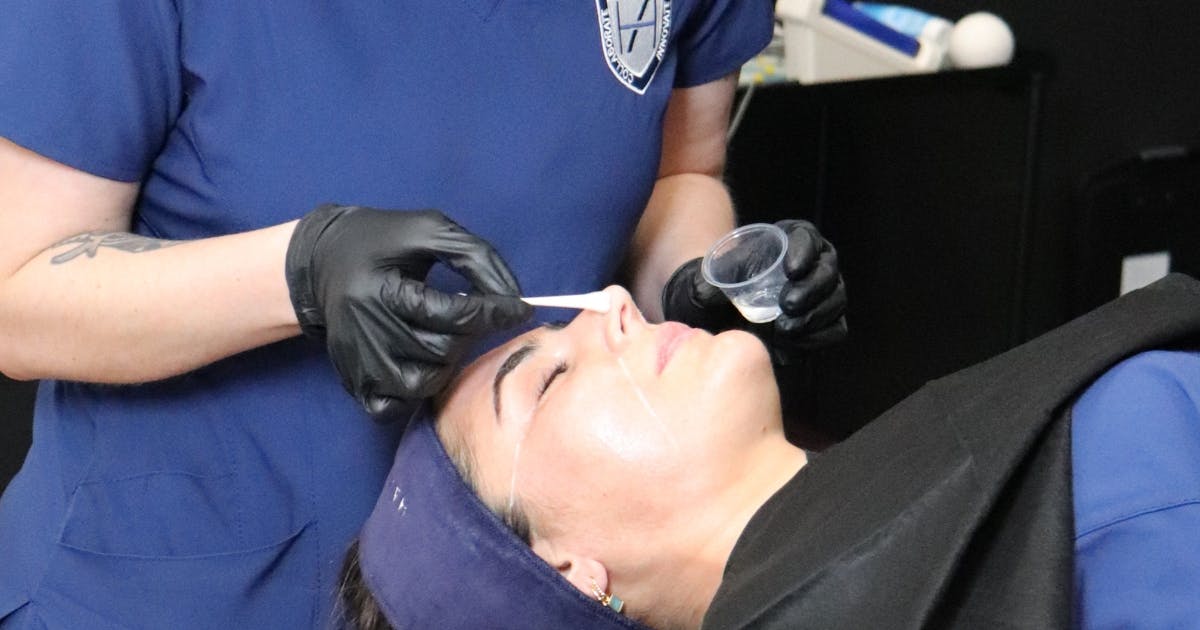
Route 3: The Combined Level 7 aka the Level 7+
This medical aesthetics training pathway is for you if:
You want to build a thriving holistic aesthetics practice offering ‘skin-first’ solutions to common cosmetic concerns. Attracting a wide range of patients is important to you - not just those who want botox or fillers. You wish to be able to supplement your income by selling topical skincare products and offering skin assessment services.
Time taken to complete:
The timeline for our Level 7 Diploma in Botox & Dermal Fillers can be found above in the Route 2 section. Our Cosmetic Dermatology Course involves an additional 94 hours of eLearning plus 5 extra in-clinic practical training days. These can be booked in for during or after your Level 7 course.
Confidence building level:
We would rate your confidence after successfully completing our Combined Level 7 course as a 5 out of 5.
The Combined Level 7 pathway
This route is the most holistic, offering a thorough education in skin in addition to our flagship Level 7 Diploma in Botox & Dermal Fillers qualification. We do this by combining our Level 7 programme with our certified Cosmetic Dermatology Course.
By learning so much about skin and how to address common cosmetic concerns without botox and fillers, you’ll develop a much deeper understanding of facial aesthetics. This can, in turn, enhance your confidence in your aesthetic medicine practice more generally.
You can choose when you take each element of your course, allowing you to develop your own learning schedule. For example, you don’t need to complete your Level 7 then move on to your Cosmetic Dermatology Course. You can choose dates that suit you to complete each session, whether that’s individually or by mixing your schedule between Level 7 botox and filler training elements and skin sessions.
Course components for the Combined Level 7:
- Dedicated suite of Level 7 eLearning
- Foundation Training in Medical Aesthetics
- 2 x Clinic Shadowing Days - also known as Observation Days (Level 7)
- One-to-one clinical mentoring sessions covering at least 10 cases of filler and 10 cases of botox (the 10th case of each will be your assessment - Level 7)
- 1 x botox DOPS (Direct Observation of Practical Skills assessment - Level 7)
- 1 x filler DOPS (Level 7)
- Logbook submission (Level 7)
- 1x Short Answer Questions assessment (Level 7)
- 1x Clinical Scenario Questions assessment (Level 7)
- 1 x Literature Review (Level 7)
- 1 x Theory Exam (Level 7)
- Dedicated Cosmetic Dermatology Course eLearning
- Foundation Training in Cosmetic Dermatology
- Chemical Peels training
- Hyperpigmentation & Skin of Colour training
- Injectables for Skin Rejuvenation training (includes polynucleotides)
- Microneedling training.
You will be awarded the following:
- Foundation Training in Medical Aesthetics completion certificate (awarded after successful completion of your first clinical day - you can use this to obtain your insurance)
- Foundation Training in Cosmetic Dermatology completion certificate
- Cosmetic Dermatology Course completion certificate for each stage (Chemical Peels, Hyperpigmentation & Skin of Colour, Injectables for Skin Rejuvenation, Polynucleotides, Microneedling)
- Level 7 Diploma in Clinical Aesthetic Injectable Treatments qualification and certificate (awarded for your Level 7 Diploma course only, should you gain a pass mark that is upheld during moderation by our awarding body, VTCT)
- The ability to use the post-nominal title, PGDipAes (VTCT) in relation to your Level 7.
Other ways to boost your confidence as an aesthetics practitioner
There are four pieces of advice we can give you here that should be fairly straightforward to follow. They’re tried and tested so we know they work!
1. Treat patients regularly outside of your aesthetics courses
As the saying goes, “use it or lose it!” To become a fully confident and competent aesthetic practitioner, you need to treat patients regularly.
If you’re practising aesthetics part-time, it can take longer to become confident in your abilities, simply because you’re not doing it as often. However, when you first start out, it’s unlikely you’ll have a ready-made audience that will keep you booked up!
Make sure you set aside a specific time every week for patient appointments. Even if it’s just an evening, if not a full day, set that time up for a dedicated location and let people know!
By setting up this regular schedule, you’re committing to building your experience. This routine also helps patients to know where and when they can find you. As your demand - and confidence - grows, you can then increase this time and build your clinic from there.
Ensuring you’re regularly treating patients is key to developing your practice. Even if you’re only doing toxin for the first year, you’ll still be enhancing your aesthetics skills. This includes vital ‘soft’ aspects such as perfecting your patient consultations.
2. Shadow colleagues for additional experience
Whenever we ask our Level 7 trainees what their favourite part of their course is they always say the practical mentoring sessions. Their second favourite is always the Observation Days or ‘Clinical Shadowing’.
Many of us learn best by watching others and this is just as true when it comes to aesthetics training. The only thing to be careful of here is ensuring the practitioners you’re watching are using best practice techniques so you’re learning the correct way to do things.
To do this you can reach out to injectors you admire to ask if you could shadow them - or assist them - for an afternoon or a full day. Alternatively, look them up online as many will have videos of them administering certain treatments that you can watch and learn from via social media.
You can also attend conferences where live injecting demonstrations are held. This is a fantastic way to observe great injectors at work, as well as offering the chance to network and update your industry knowledge.
3. Recognise the skills you already bring to the table as a healthcare professional
If you’re having a crisis of confidence and worry that you’re not good enough, take stock of all the skills you already possess. What do you bring to the table from your medical background?
These could include:
- Taking a detailed medical history
- Patience when explaining things to clients
- Making complex medical terms easy to understand for non-medics
- Building an open and trusting relationship with your patients
- Having a finely tuned ‘gut’ that warns you when something may not be right.
As these are skills you’ll have been using since day one of your medical careers and finessing over time, chances are you don’t even realise you’re using them. Yet these transferable skills elevate your service as an aesthetic practitioner to an entirely different level. Remember everything you already know and do well and how much patients prize these aspects of your practice. Then take confidence from this!
4. Never stop learning!
Aesthetic medicine is a relatively new specialty. As such, it’s developing and growing apace with constant evolutions in techniques, approaches, products and devices.
If your goal is to become an aesthetic medicine expert with career longevity, you’ll need to commit to lifelong learning. But this may not mean what you think…
This doesn’t mean you have to learn every new product or technique that comes along.
It means:
- Knowing enough to decide which are most appropriate for your patients
- Deciding which you believe are safe, effective and worth the price tag
- Understanding how much you can gain from refreshing your basic technique knowledge once a year
- Reading and reflecting on new research for evidence-based learning
- Attending conferences and networking events so you know what’s happening across the industry in a broad sense - even if you choose not to get involved in certain areas.
Aesthetic medicine can provide so many opportunities for healthcare professionals. Knowing which aesthetics course to take to get you started is probably the hardest decision you’ll have to make! We can help to make this easier for you.
First, take our two-minute course matchmaker quiz which will ask you a short series of questions. It’ll then list your best aesthetics training matches based on your responses. These include looking at your goals, time commitments and budget.
Then, if you want more information - or if quizzes aren’t your thing - just book a call with our Course Advisors. They’ll happily answer all your questions on a no-obligation basis and take you through aspects from payment plan options to when you can book your first session.
We hope this advice has been helpful and if there’s anything else you’d like to know, do let us know via the chatbot in the right-hand corner of this screen.
All information correct at time of publication
Download our full prospectus
Browse all our injectables, dermal fillers and cosmetic dermatology courses in one document
By submitting this form, you agree to receive marketing about our products, events, promotions and exclusive content. Consent is not a condition of purchase, and no purchase is necessary. Message frequency varies. View our Privacy Policy and Terms & Conditions
Attend our FREE open evening
If you're not sure which course is right for you, let us help
Join us online or in-person at our free open evening to learn more
Our Partners












STAY INFORMED
Sign up to receive industry news, careers advice, special offers and information on Harley Academy courses and services


